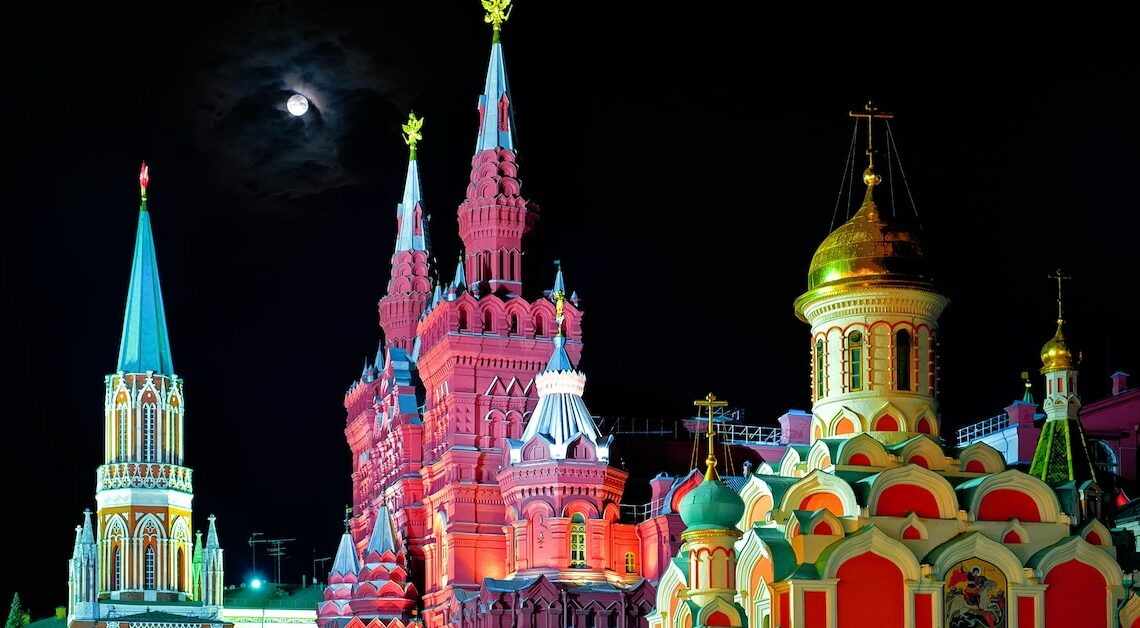
Are you wondering why Russia is so big? Its origins date back to the early 9th century and continue to be an interesting story to this day.
Why is Russia so big? How Russia developed into a world power
With an area of 17,074,636 km², Russia is the largest country in the world. However, this was not always the case. Russia has expanded steadily over time and has therefore been able to grow continuously.
- The first East Slavic empire, known to this day as Kievan Rus, was roughly the size of Belarus, western Russia up to the Urals, and Ukraine. In the 10th century, Kievan Rus managed to expand considerably.
- First came the Greeks, who founded colonies on the Black Sea. Then came horsemen who settled in Kievan Rus. However, the increased population growth repeatedly led to conflicts and attacks.
- Things were particularly eventful under Genghis Khan's successors, including his grandson Batu Khan. He led the Mongols west to conquer Kievan Rus'. He was successful and was able to expand his empire from the Crimea to the Chinese border.
- Only in the north did the Kievan Rus offer the best resistance. This aroused the interest of the Teutonic Order and Sweden. In a brilliant battle around 1240 on the Neva, clashes broke out. Thanks to Alexander Nevsky, who is still a Russian national hero today, the Kievan Rus prevailed and was not conquered.
- After the death of Genghis Khan, his successors founded the Golden Horde, a territory ruled by khans (a title for the Mongol rulers) that stretched from the “Crimea in the west to the Chinese border in the east”. This ruled the Russian principalities for a long time. However, the Grand Duchy of Moscow was the strongest and was able to assert itself against the khans and expand.
Russia's growth under the influence of the tsars
However, Russia's expansion did not end there. Over time, Russia was able to acquire more land, some of which was acquired through battles waged by the tsars.
- In the 14th century, a power struggle broke out between the Moscow Empire, which lived strictly Orthodox, and Catholic Lithuania. Ivan III, who won the battle, was from then on considered the Grand Duke of Russia. Construction of the Moscow Kremlin began during his lifetime.
- It was also Ivan III who chose the double-headed eagle as the symbol of Russia and established the title of Tsar. The term Tsar is derived from the Latin word Caesar and means emperor.
- During the Tsarist era, Russia also managed to expand its power and extend its lands from Kievan Rus to the Pacific. Peter the Great, grandson of Michael Fyodorovich and the first Romanov, led the “Northern War” for 21 years. He succeeded in establishing Russia as the leading power in Europe.
- There were also repeated attempts by various rulers to conquer the Russian Empire. Napoleon's advance is particularly well-known and he at least made it to the gates of Moscow. But Tsar Alexander I drove back the French troops and is still considered the savior of Europe today.
Russia in the 20th and 21st centuries and further attempts at enlargement
Although the monarchy in Russia had made some decisive contributions to the greatness of the country, it was not accepted by everyone. The first revolution in 1905 did not bring the desired success. The turning point, however, came in 1917.
- Vladimir Ilyich Lenin tried to overthrow the monarchy together with the Bolsheviks. They succeeded with the October Revolution, which brought down the monarchy. In 1922, the Soviet Union, also known as the USSR (Union of Soviet Socialist Republics), was founded.
- When Lenin died in 1924, Joseph Stalin took power and ruled the country with a firm hand. After the Second World War, the “Cold War” between the Soviet Union and the USA followed. This resulted in parts of Europe being divided between the major powers.
- Mikhail Gorbachev, who ruled Russia from 1985, made many reforms. The resulting conflicts led to the dissolution of the Soviet Union. Since 1993, Russia has officially been a constitutional state. The president is therefore elected by the people. After Boris Yeltsin, Vladimir Putin is in office as president.
- He has been waging war against Ukraine since February 2022 in order to expand his country again. So far (as of September 2024) the war has not ended. Putin is working on a new world order, which he is keeping strictly in focus.
- Russia has been able to expand over time. The country borders four seas and 14 countries. In addition to cities such as Moscow and St. Petersburg, large areas consist of forests, steppes and mountains.
